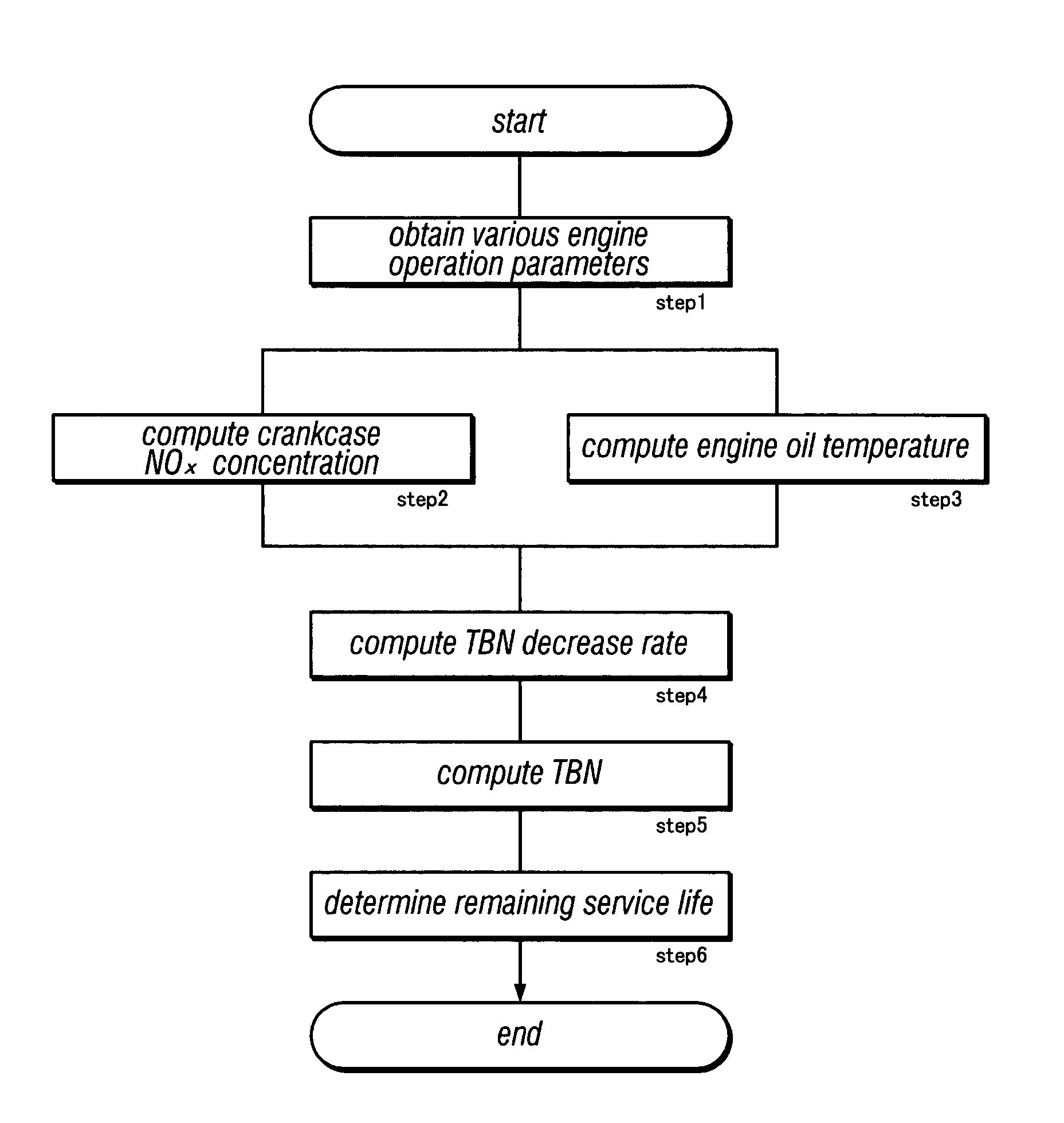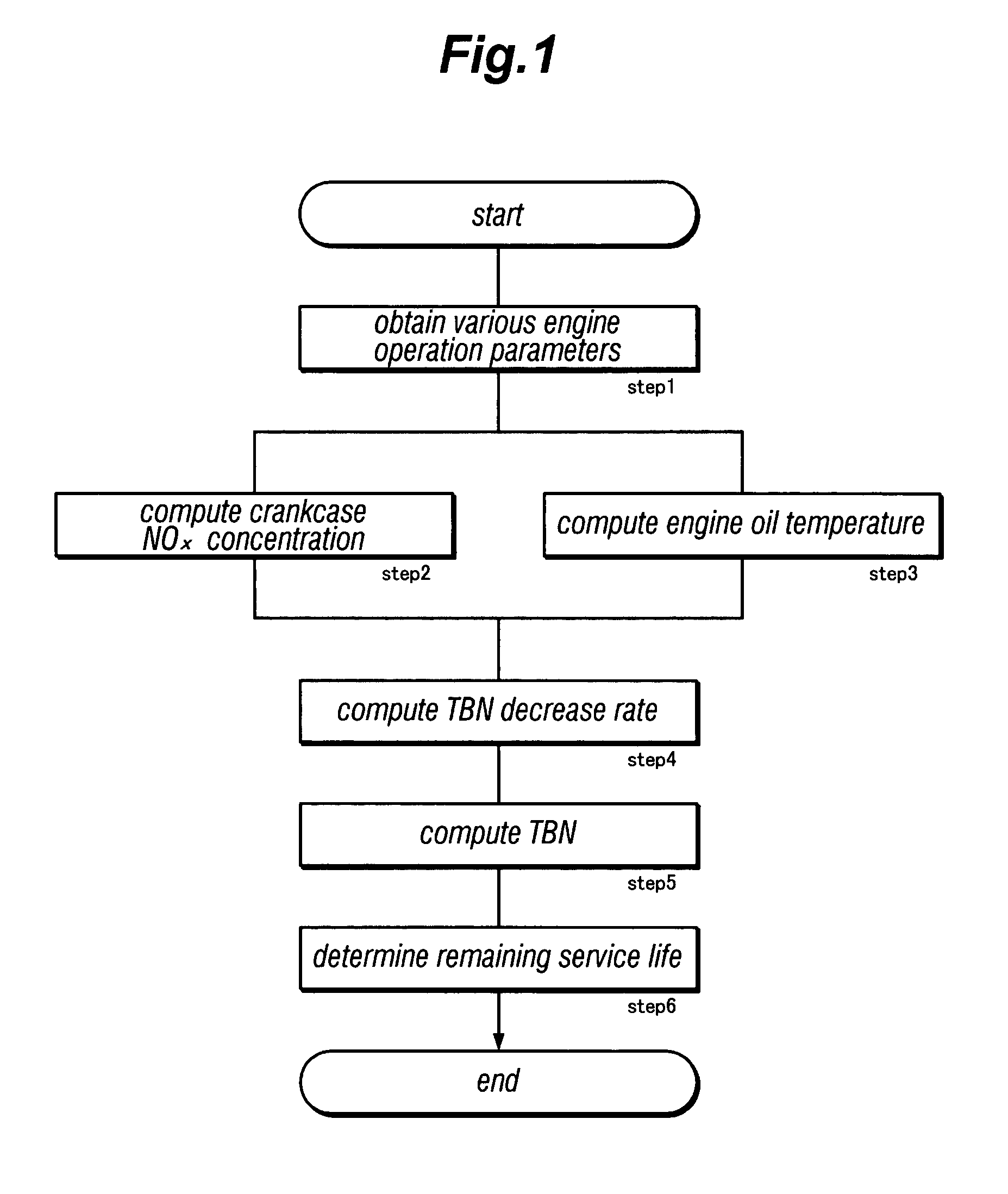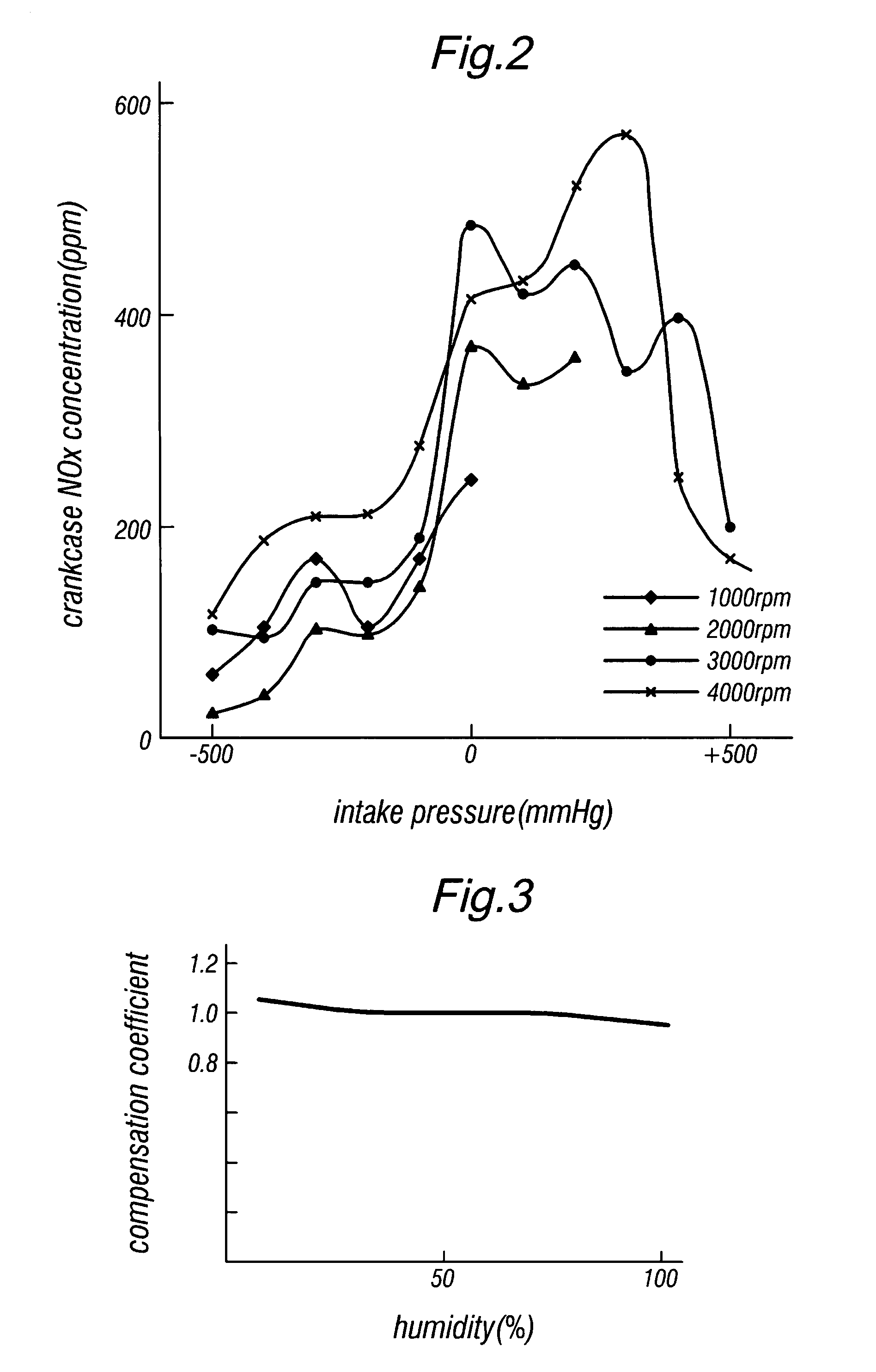Method for detecting a condition of engine oil
a technology for engine oil and condition, applied in the direction of machines/engines, auxiliary lubrication, instruments, etc., can solve the problems of inaccurate evaluation of engine oil advance, too expensive methods, and unreliable methods to be adopted in vehicles for the general public, so as to achieve accurate estimation and accurate estimation
- Summary
- Abstract
- Description
- Claims
- Application Information
AI Technical Summary
Benefits of technology
Problems solved by technology
Method used
Image
Examples
Embodiment Construction
[0029]Now the control flow of the present invention is described in the following with reference to FIG. 1.
(Step 1: Obtaining Various Engine Parameters)
[0030]First of all, various engine parameters such as the crankshaft rotational speed, load (intake negative pressure, throttle valve opening and fuel injection), valve lift, valve timing, ignition timing and cooling water temperature, that change in dependence on the operating condition of the engine, as well as the intake (atmospheric) temperature and relative humidity, are obtained. These parameters are obtained from various sensors that are commonly used in current motor vehicles.
(Step 2: Compute NOx Concentration in Crankcase)
[0031]The NOx concentration in the crankcase that significantly affects the degradation of the engine oil is computed from the various parameters that were obtained in step 1. The NOx concentration in the crankcase can be obtained, for instance, by the technique described below:
[0032]1. The NOx concentratio...
PUM
 Login to View More
Login to View More Abstract
Description
Claims
Application Information
 Login to View More
Login to View More - R&D
- Intellectual Property
- Life Sciences
- Materials
- Tech Scout
- Unparalleled Data Quality
- Higher Quality Content
- 60% Fewer Hallucinations
Browse by: Latest US Patents, China's latest patents, Technical Efficacy Thesaurus, Application Domain, Technology Topic, Popular Technical Reports.
© 2025 PatSnap. All rights reserved.Legal|Privacy policy|Modern Slavery Act Transparency Statement|Sitemap|About US| Contact US: help@patsnap.com



